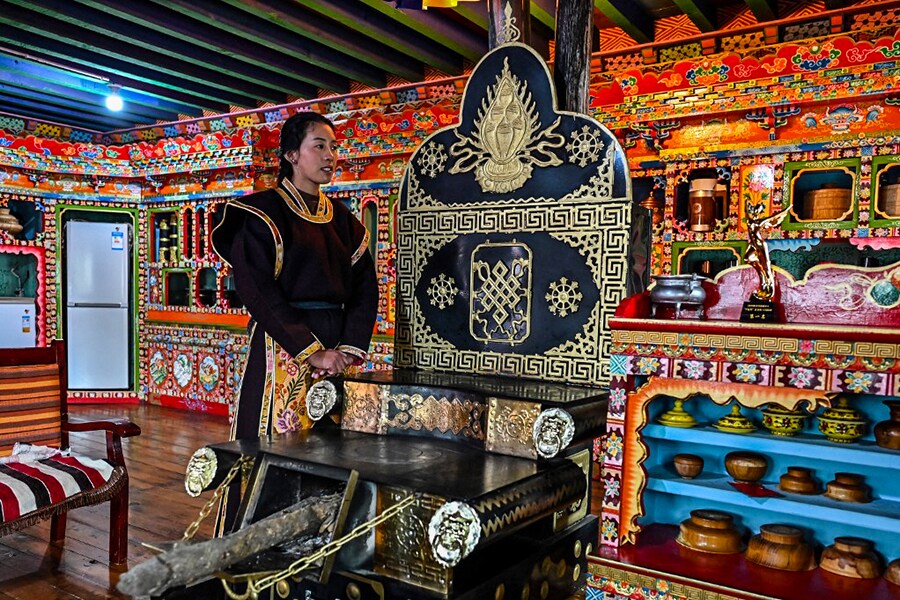
Herders to hoteliers: China lures millions of tourists to Tibet
Tourism in Tibet fits with one of China's key aims — poverty alleviation—but also, experts warn, follows a pattern of co-opting and reshaping outlying areas with a history of resistance to Beijing's rule
 This photograph taken on June 4, 2021 during a government organised media tour shows villager Baima at her hotel in the village of Tashigang in the city of Nyingtri in China's Tibet Autonomous Region. - Thirty-five million tourists flooded into the region last year, ten times the entire population of Tibet — prompted warnings that the influx could overwhelm traditional lifestyles and values.
This photograph taken on June 4, 2021 during a government organised media tour shows villager Baima at her hotel in the village of Tashigang in the city of Nyingtri in China's Tibet Autonomous Region. - Thirty-five million tourists flooded into the region last year, ten times the entire population of Tibet — prompted warnings that the influx could overwhelm traditional lifestyles and values.
Image: Hector Retamal / AFP
In a room warmed by an open wood stove, Baima says her family converted their white-brick house into a hotel as China's Communist leadership ushers tens of millions of tourists to the politically sensitive region of Tibet.
Surrounded by mist-covered mountains, nearly 500 kilometres (300 miles) from the capital Lhasa and close to a disputed border with India, most of the houses in her remote village of Tashigang have followed suit and turned into homestays.
"We used to live a life of herding and farming," the 27-year-old told AFP. "Then the government encouraged us to run a hotel."
The villagers — who speak the Tibetan language — have been given Mandarin classes to help them accommodate the Chinese guests whose arrival has boosted their income.




